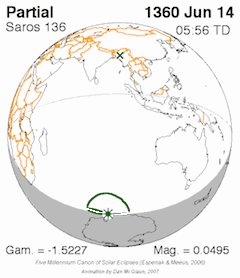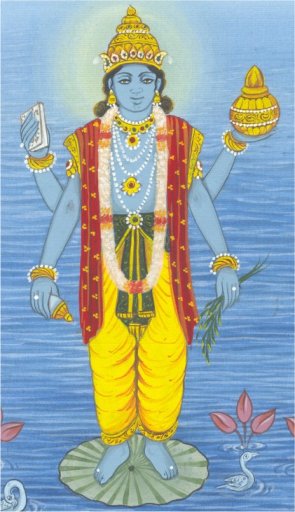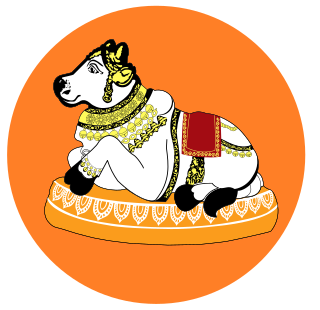
Friday the 13th is considered an unlucky day in Western superstition. It occurs when the 13th day of the month in the Gregorian calendar falls on a Friday, which happens at least once every year but can occur up to three times in the same year. For example, 2015 had a Friday the 13th in February, March, and November, which will happen again in 2026; 2017 through 2020 had two Friday the 13ths, as did 2023; 2016, 2021 and 2022 had just one Friday the 13th, as will 2025, 2027, and 2028; 2024 will have two Friday the 13ths.

Eclipses may occur repeatedly, separated by certain intervals of time: these intervals are called eclipse cycles. The series of eclipses separated by a repeat of one of these intervals is called an eclipse series.

Diwali is the Hindu festival of lights, with variations celebrated in other Indian religions. It symbolises the spiritual "victory of light over darkness, good over evil, and knowledge over ignorance". Diwali is celebrated during the Hindu lunisolar months of Ashvin and Kartika—between around mid-September and mid-November. The celebrations generally last five or six days.

Hanuman Jayanti is a Hindu festival celebrating the birth of the Hindu deity, and one of the protagonists of the Ramayana and its many versions, Hanuman. The celebration of Hanuman Jayanti varies by time and tradition in each state of India. In most northern states of India, the festival is observed on the full-moon day of the Hindu month of Chaitra .. In Telugu states Anjaneya Jayanthi celebrate on every Bahula Dashami in Vaishakha month according to Telugu calendar. In Karnataka, Hanuman Jayanti is observed on Shukla Paksha Trayodashi, during the Margashirsha month or in Vaishakha, while in a few states like Kerala and Tamil Nadu, it is celebrated during the month of Dhanu. Hanuman Jayanti is observed on Pana Sankranti in the eastern state of Odisha, which coincides with the Odia New Year.

Dhanteras, also known as Dhanatrayodashi, is the first day that marks the festival of Diwali in most of India.

Kārtika is the eighth month of the Hindu calendar, which falls in October and November of the Gregorian calendar. In India's national civil calendar, Kartika is the seventh month of the year, beginning on 23 October and ending on 21 November.
Patlur is a village in Anthiyur Taluk, Erode district, Tamil Nadu State, India with a population of approximately 8100. The main occupation in Patlur is agriculture.
This article lists the traditional festivals and other cultural events in the Odisha region of India. Odisha celebrates 13 festivals in 12 months as the saying goes Bāra Māsare Tera Parba.

Pradosha or Pradosham is a bimonthly occasion on the thirteenth day (Trayodashi) of every fortnight in the Hindu calendar. It is closely connected with the worship of the Hindu god Shiva. The auspicious three-hour period 1.5 hours before and after sunset is considered as the most suited and optimal time for worship of Shiva on this day. The fasting vow performed during the period is called "Pradosha vrata". A devotee should wear rudraksha, Vibhuti and worship Shiva by abhisheka, sandal paste, bael leaves, fragrance, deepa and naivedya.
Navami is the Sanskrit word for "ninth", and is the ninth day in the lunar fortnight (Paksha) of the Hindu calendar. Each month has two Navami days, being the ninth day of the "bright" (Shukla) and of the "dark" (Krishna) fortnights respectively. Navami occurs on the ninth and the twenty-fourth day of each month.
The religious festivals of the Kashmiri Pandits have Rigvedic roots. Some festivals of Kashmiri Pandits are unique to Kashmir. Some Kashmiri Pandit festivals are Herath (Shivaratri), Navreh, Zyeath-Atham, Huri-Atham, Zarmae-Satam (Janmashtami), Dussehra, Diwali, Pan, Gaad Batt, Khetsimavas (Yakshamavasya), Kava Punim, Mitra Punim, Tiky Tsoram, Gengah Atham, Tila Atham, Vyetha Truvah, and Anta Tsodah.

An eclipse season is a period, roughly every six months, when eclipses occur. Eclipse seasons are the result of the axial parallelism of the Moon's orbital plane, just as Earth's weather seasons are the result of the axial parallelism of Earth's tilted axis as it orbits around the Sun. During the season, the "lunar nodes" – the line where the Moon's orbital plane intersects with the Earth's orbital plane – align with the Sun and Earth, such that a solar eclipse is formed during the new moon phase and a lunar eclipse is formed during the full moon phase.
Pūrṇimā is the word for full moon in Sanskrit. The day of Purnima is the day (Tithi) in each month when the full moon occurs, and marks the division in each month between the two lunar fortnights (paksha), and the Moon is aligned exactly in a straight line, called a syzygy, with the Sun and Earth. Full moon is considered the third of the four primary phases of the Moon; the other three phases are new moon, first quarter moon, and third quarter moon. The full moon shows 100% illumination, causes high tides, and can concur with lunar eclipses.
Prathama or Pratipada is the Sanskrit word for "first", and is the first day in the lunar fortnight (Paksha) of the Hindu calendar. Each month has two Prathama days, being the first day of the "bright" (Shukla) and of the "dark" (Krishna) fortnights respectively. Prathama occurs on the first and the sixteenth day of each month.

Dvitiya also referred to as Beej and Dooj is the Sanskrit word for "second", and is the second day of the lunar fortnight (Paksha) of the Hindu calendar. Each Hindu month has two dvitiya days, being the second day of the "bright" (Shukla) and of the "dark" (Krishna) fortnights respectively. Dvitiya occurs on the second and the seventeenth day of each month.
Tritiya is the third day in the lunar fortnight (Paksha) of the Hindu calendar. Each month has two Tritiya days, being the third day of the "bright" (Shukla) and of the "dark" (Krishna) fortnights respectively. It is called as Tadige in Kannada.
Dashami is the Sanskrit word for "tenth", and is the tenth day in the lunar fortnight (Paksha) of the Hindu calendar. Each month has two Dashami days, being the tenth day of the "bright" (Shukla) and of the "dark" (Krishna) fortnights respectively. Dashami occurs on the tenth and the twenty-fifth day of each month.
Jain festivals occur on designated days of the year. Jain festivals are either related to life events of Tirthankara or they are performed with intention of purification of soul.








